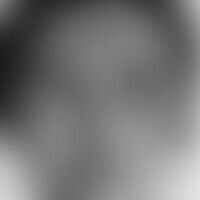
Lupus erythematodes chronicus discoides L93.0
Lupus erythematodes chronicus discoides. 5 years of persistent recurrent skin changes in a 25-year-old girl, despite disease-adapted therapy measures. Large flat, soft-red plaque (with still preserved follicles). Conspicuous (re-)pigmentation within a few weeks in the lesional skin (which was hypopigmented before).

Hyperpigmentation postinflammatory L81.0

Melasma L81.1
Chloasma/melasma ina 35-year-old female patient with large blurred areas of hyperpigmentation.

Melasma L81.1
chloasma/melasma. blurred, partly flat, partly also net-like or splatter-like yellow-brown spots. clear increase of pigmentation differences in spring. decrease, but not complete disappearance in winter

Lentigo maligna melanoma C43.L
Lentigo maligna melanoma. overview image: 1.2 x 0.5 cm (inconspicuous), brown lentigo maligna melanoma on the right cheek in a 70-year-old patient. TD 0.4 mm, Clark level II, pT1a N0M0, stage Ia according to AJCC 2002, no regression signs.

Melanodermatitis toxica L81.4
Melanodermatitis toxica. solitary, chronically stationary (no growth dynamics), large-area, blurred, asymptomatic (only cosmetically disturbing), brown, smooth spot. pronounced solar damage to the skin.

Melanodermatitis toxica L81.4
Melanodermatitis toxica: detailed image with the upper bizarre demarcation line to the unaffected skin.

Argyria L81.8
Argyrie: diffuse, completely symptom-free brown coloration of the facial areas in the area of exposed areas, which does not recede even in the winter months.

Melasma L81.1
Chloasma. bizarre, mask-like, linear, reticulated or even splatter-like brown-yellow hyperpigmentations, which appear especially after (already minimal) exposure to sunlight. ovulation inhibitor already discontinued for > 1 year

Nevus of Ota D22.30
Naevus fuscocoeruleus ophthalmomaxillaris. Irregularly limited, planar, brown to blackish blue, half-sided pigmentation. No clinical symptoms.

Extrinsic skin aging L98.8
Light ageing of the skin: chequered skin with small hyperpigmentations (solar lentigines).

Thomson syndrome Q82.8
Thomson's syndrome. bilateral raparification of the eyebrows and eyelashes in a 59-year-old woman with Thomson's syndrome. Furthermore, cross-linked telangiectasias, confluent pigmentation spots and well definable depigmentation on both cheeks.

Ephelids L81.2
Ephelids: Spatter-like distributed, yellowish-brownish, smooth spots in the zygomatic arch region of a 19-year-old woman.

Melanodermatitis toxica L81.4
melanodermatitis toxica. chronic stationary (no growth dynamics), large, blurred, symptomless (only cosmetically disturbing), brown, spots. probably chronic, photoxic dermatitis due to frequent use of "refreshing tissues". DD. Chloasma.

Nevus melanocytic congenital D22.-
Nevus, melanocytic, congenital. since birth existing, well defined, bizarrely configured, sharply limited, light brown (in the cranial part) to strongly brown (in the middle and lower part) spot on the face of an 11-year-old boy.

Amiodarone hyperpigmentation T78.9
Amiodarone hyperpigmentation: cyanosis-likeamiodarone hyperpigmentation after long-term application of the preparation due to tachyarrhythmia.








